While World War II raged in September 1943, a ship departed from Melbourne docks carrying a most unusual passenger.
On board was a duck-billed platypus, a beady-eyed young male called Winston. He was ensconced in state-of-the-art accommodation: a portable platypussary built especially to house him as comfortably as possible on the long journey to Liverpool.
The platypus is a monotreme, one of nature’s oddballs that bridge the evolutionary gap between mammals and reptiles.
Before being loaded onto the heavily armed MV Port Phillip, Winston had been trained lovingly for months by the keeper at Healesville Sanctuary, David Fleay, in the hope of making the journey as smooth as could be.
An 18-year-old ship’s cadet had also been appointed ‘platypus keeper’, charged with proffering Winston’s daily diet of 700 worms and tending to the animal’s needs.
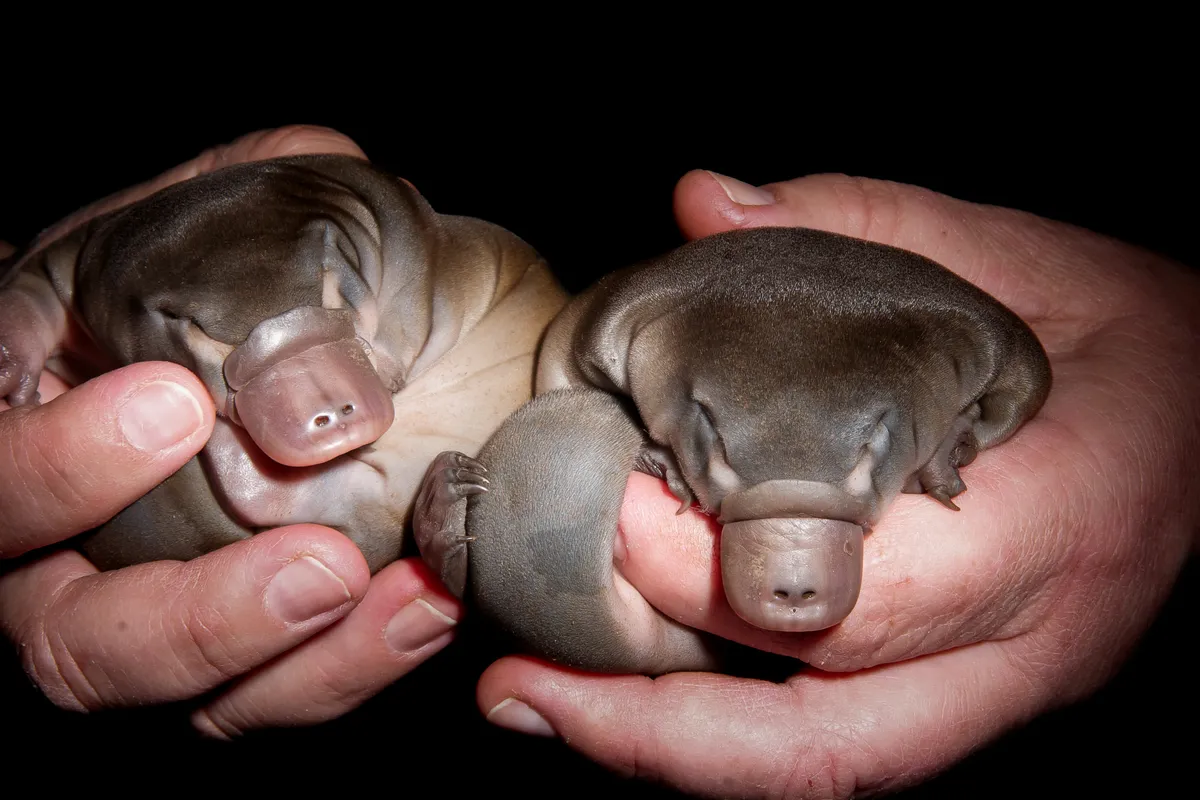
Why was Winston the platypus being brought to England?
The reason for this strange wartime escapade? The whim of Winston’s namesake: Winston Churchill. In March 1943 the British Prime Minister telegrammed Australian Prime Minister, John Curtin, requesting six platypuses be sent to Britain forthwith. There was a strict law in place preventing the removal of platypuses from Australia, but, given who was asking, Curtin decided to make an exception, just this once.
Seeing a live platypus had been a long-term ambition of Churchill's. He already kept a colourful menagerie containing black swans, a lion called Rota, white kangaroos and various other strange beasts. Many of these were gifts from individuals or organisations hoping to gain favour or publicity.
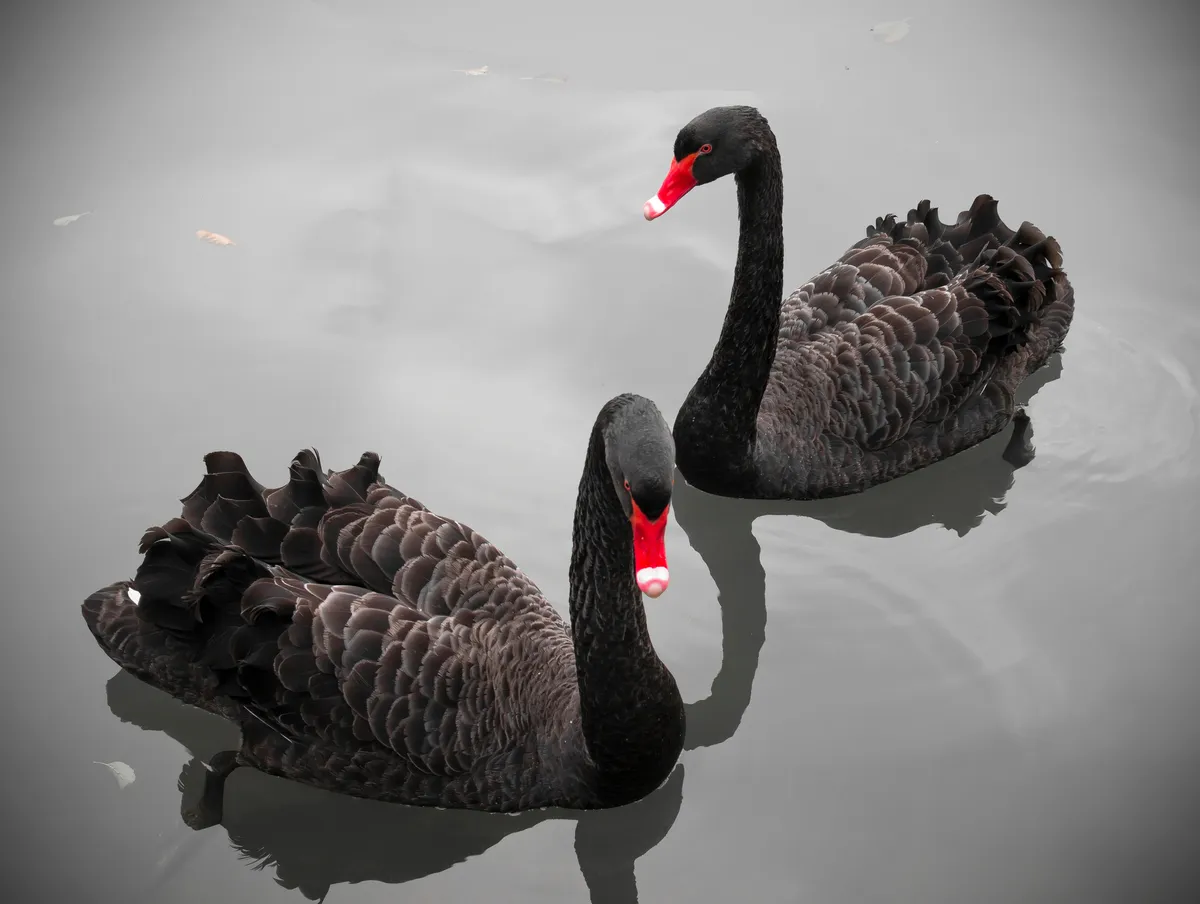
Despite the demands of war, Churchill was invested in the welfare of his animals, corresponding regularly about them with keepers and personal aides. The animals themselves were objects of great national interest because of their illustrious owner.
Rota the lion, for example, was housed at London Zoo rather than at Churchill’s home, Chartwell House, and featured in the press. When one of the black swans went missing in 1954, a Europe- wide search ensued before the bird was retrieved from Holland. Churchill’s bird was an important diplomatic matter.
The considerable efforts of Fleay and others in Australia to successfully catch and prepare Winston for his voyage were matched by the collective excitement at the prospect of his arrival in London. Keepers at London Zoo exchanged flurries of telegrams with those in Healesville Sanctuary, discussing how to build the ideal platypussary in which to keep Winston: how many tunnels, how much bedding space, where the worms were best dispensed.
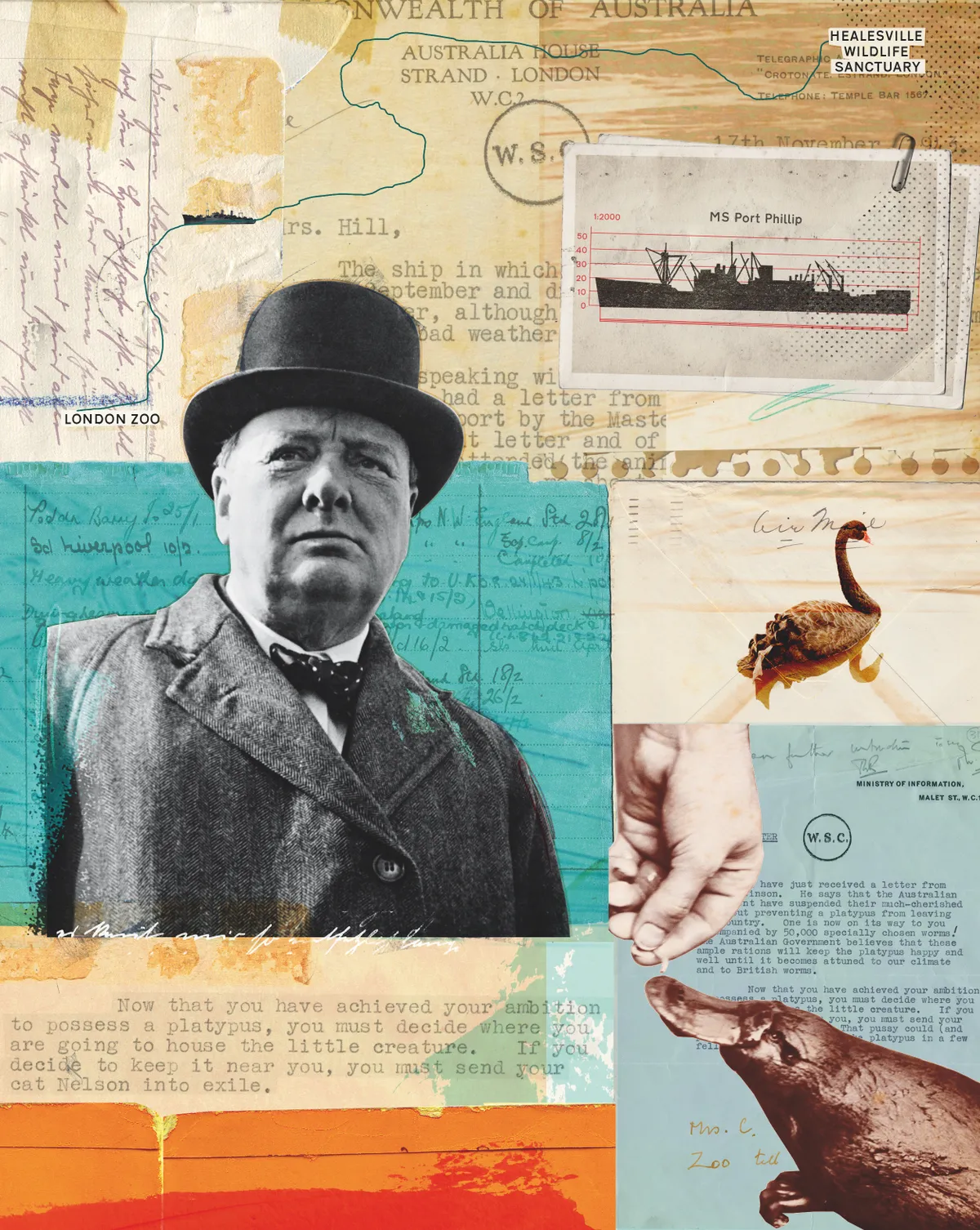
A media campaign was planned to herald Winston’s arrival and galvanise the British public into catering for his voracious appetite. They were to be asked to send in freshly caught worms to the zoo in jars, “packed in mould or moist tea leaves”. This was not purely a publicity stunt: London Zoo officials were genuinely concerned about their ability to keep up with the platypus’s daily earthworm consumption. The whole operation, though, was to be kept hidden from the public eye until the mammal made it safely to his new quarters at the zoo, in case the worst should happen.
In 1943, no platypus had ever been brought to England alive, nor has one since. Few Antipodean mammals had, though an echidna called ‘Daydream’ that arrived at London Zoo in 1903 had lived happily for several years.
Only one platypus had ever made it to a zoo outside of Australia, the lone survivor of five animals previously shipped to Bronx Zoo in New York. It lived for just seven days after its arrival, during which it attracted vast crowds of visitors. In an effort to spare Winston the same rapid demise, his public appearances were to be limited to just an hour a day.
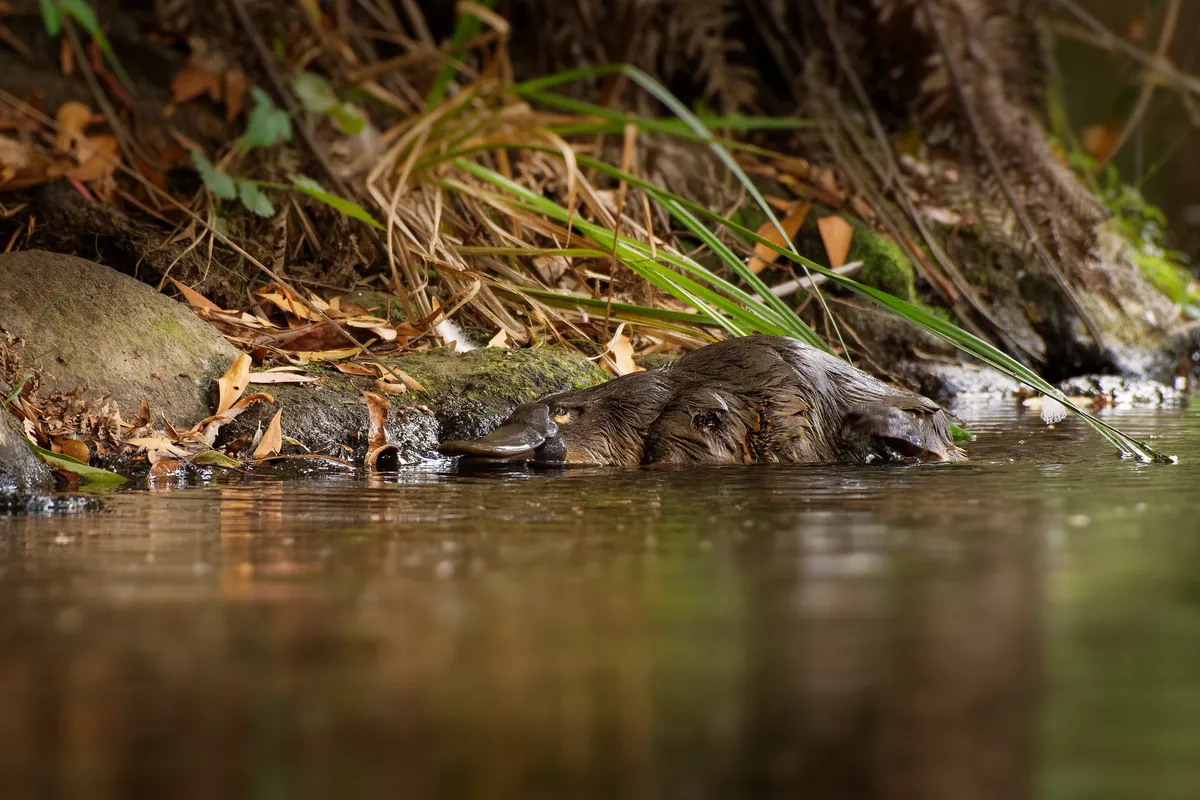
There was no expedited option for shipping platypuses, so Curtin sent Churchill the taxidermied skin of another platypus, ‘Splash’, as an interim gift. This animal had been a minor celebrity during his four years in captivity in Australia. He became almost entirely tame from his training by Robert Eadie, who had, as it happened, once saved Churchill’s life in the Boer War in South Africa. Splash’s posthumous reincarnation occupied Churchill’s desk while Operation Platypus was underway.
David Fleay at Healesville received Churchill’s request for a personal posse of platypuses with some surprise. He was then faced with fielding the bevvy of political aides, naval officials and zoo staff involved, as well as the impossibility of catching, keeping and sending six platypuses to Britain.
Fleay eventually convinced diplomatic officials that the plan to send six animals was mere fantasy. Aside from the fact that no zoo existed that could cater for so many platypuses, he assured them that “six freshly captured platypuses, housed on a ship... would suffer an immediate form of hysteria, accelerating to hopeless stampede and early death”. The young male dubbed Winston would be the sole focus of the operation, and he would be challenge enough.
Churchill received a telegram in April from his aide with the news that “the Australian Government have suspended their much-cherished law [...]one is now on its way to you accompanied by 50,000 specially chosen worms”, and the suggestion that the cat, Nelson, might need to be exiled if the platypus was to reside at Chartwell.
Why did Churchill want a platypus during the war?
Despite Churchill’s enthusiasm for exotic creatures, the request was a very strange one – almost as paradoxical as the physical form of this mammal (a member of the egg-laying monotreme group). Why did Churchill want this curious and nigh-on impossible to keep Antipodean beast transported across U-boat-infested waters? Political and practical resources were already stretched to their limits. Zoos worldwide were being bombed and were struggling to find sufficient animal feed. Why was no expense spared in preparing Winston and building his custom portable platypussary?
These facts may seem inexplicable from any rational standpoint. There were, however, very good reasons why Churchill wanted that particular animal at that particular time. That platypus was entering the war effort. The natural history of the duck-billed platypus had always been a politicised one.
In the 19th century, British and French naturalists had waged wars of words about the true nature of the platypus. Whether they laid eggs and produced milk; whether their strange hybrid forms and egg-laying meant they were mammals or not. Australian naturalists tended to be uncooperative, so it was difficult for those in Europe to get any specimens or direct observations to settle these debates.
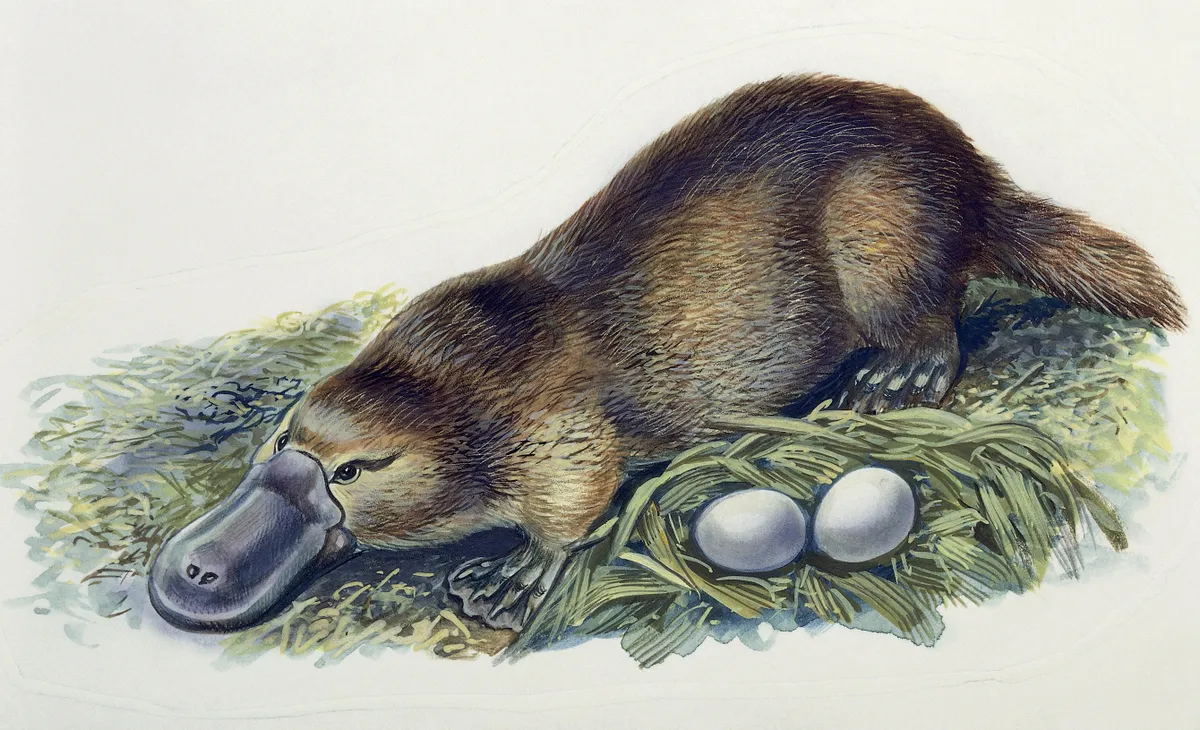
Even by the time Churchill made his request, many details of platypus life history were still under question. A coterie of live platypuses in London Zoo, especially if they could breed, would help establish British authority over these scientific rivalries and cement London Zoo’s place as a leader in zoological research.
The British public was not particularly aware of these old scientific controversies. Yet accomplishing a task both so frivolous and apparently impossible at a time when day-to-day life was strained could only be good for raising British spirits.
The zoo already provided a pleasant war-time distraction: thousands of people visited the institution daily during special exhibitions, such as the ‘Chimps’ Tea Party’ (an event that continued beyond the war). A billed, egg-laying amphibious mammal would be a similarly exciting spectacle.
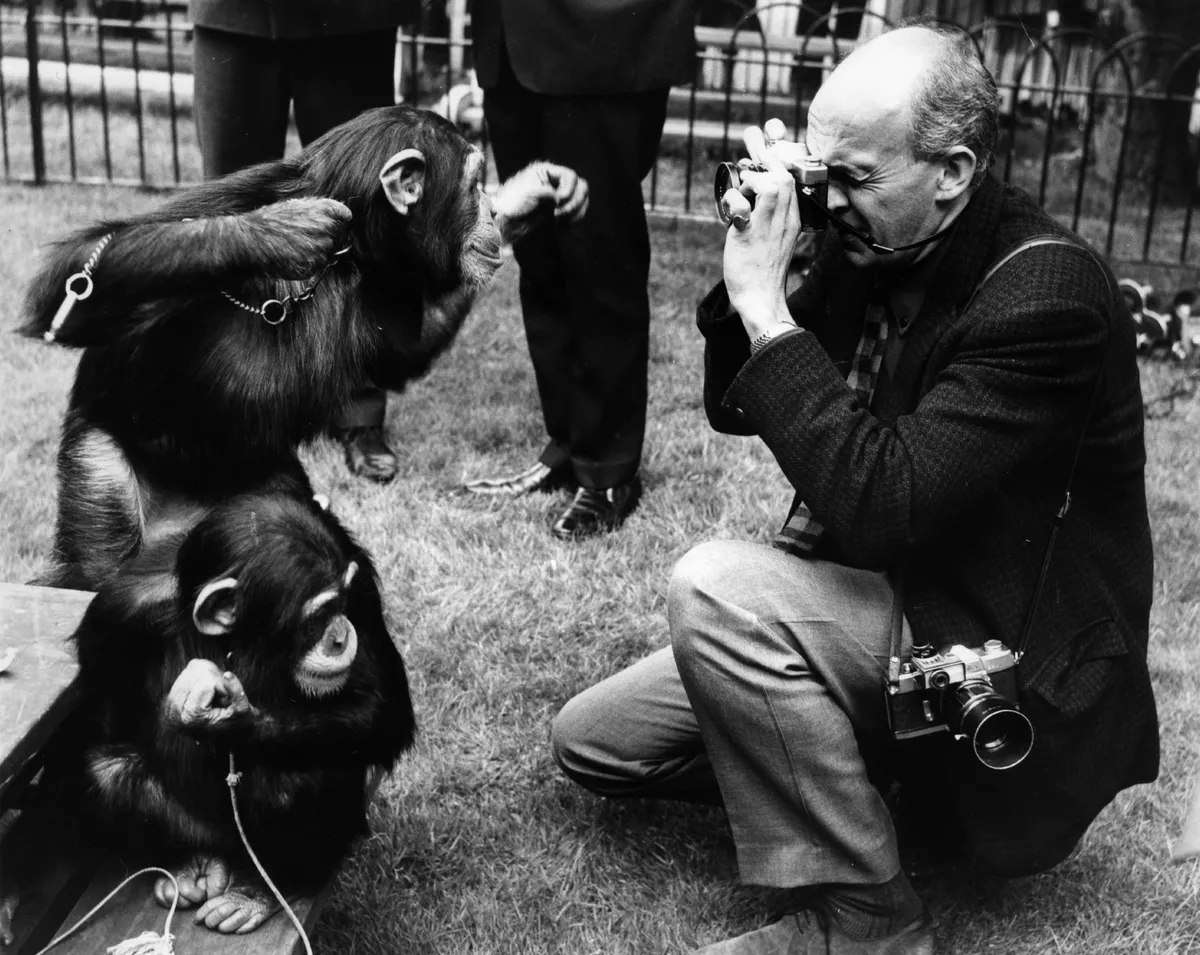
Acquiring a never-before-seen zoo inhabitant would also boost Churchill’s image as an eccentric, charismatic leader – as well as public morale. The collective nationwide effort of feeding its incredible appetite for worms would certainly add another meaning to the wartime slogan ‘Dig for Victory’.
Animals as diplomatic gifts
But the Prime Minister’s animals were not only matters for diplomacy, they could be matters of diplomacy. Creatures could be emissaries, especially iconic and engaging ones such as the platypus. They could be gifts with political meaning: tokens to build alliances, curry favour or repair broken bonds.
Churchill’s request might have aimed to improve strained relations between Australia and Britain. Despite giving Britain invaluable military support, Australia had been neglected by its ally when herself in dire need of boats and aircraft. Prime Minister Curtin had publicly suggested that the traditional bond with Britain should be abandoned in favour of one with the USA.
Churchill was not prepared to cut ties with a previous British colony, nor to lose one of the key members of the British Commonwealth, however. From this perspective, his request could be seen as reasserting British political power: exerting pressure to make an exception to the law forbidding the removal of these unusual animals from Australia. But there was a more important symbolic role for this particular species.
From the earliest origins of menageries and animal collections, animals have been used as tokens of imperial ownership. The flagship animals of continents – elephants, giraffes, rhinos, tigers – have been used to represent their regions of origin. Zoo organisation and decoration, for example incorporating ‘oriental’ buildings or ‘African savannah’ scenery, mapped out colonised continents in the very architecture of the zoo itself, even well into the 20th century.

Access to animals has historically depended on trade routes, colonial ventures and diplomatic relations, so a geographically comprehensive zoological collection was also a sign of global power. The platypus played this role perfectly: the giving of Australia’s totem beast was a symbol of continued allegiance to Britain.
Fleay described the platypus as “the most famous of all Australian creatures, because of its duck-like sensitive bill, its lovely seal-like fur, the beaver-like tail, the short, strong limbs with webbed feet and digging claws, the possession of a venom apparatus and hollow spurs on the ankles of the male, the laying of eggs and the suckling of young”. Winston signified that Australia was still part of the political menagerie.
The platypus was also a ‘gift’. One that Churchill had requested knowing it had many strings attached. The efforts required to transport Winston had created a debt that Churchill would be only too glad to repay. Fleay himself wrote: “might not the little animals be urgers for more planes and guns?” In the year of Operation Platypus, Churchill finally heeded Australia’s numerous requests for military assistance by sending over warships and more of “the latest type of topicalised Spitfire”, and included Australia in the War Council.
Not only political and zoological relations were forged by the export of this chimerical creature. Quite simply, nobody knew anything about platypus husbandry outside of Australia. Fleay himself became the first person to breed a platypus in captivity in 1943.
The prospect of keeping a platypus was a daunting one for the keepers at London Zoo. The impending arrival stimulated unprecedented cooperation between the Antipodean and British keepers, in discussions about the ways to house, feed, train and amuse a platypus successfully. The circulation of zoological and zookeeping knowledge has certainly developed since then.
What happened to Winston the platypus?
Sadly, Winston never made it to the platypussary that had been so carefully constructed for him. Though the journey through the Panama Canal and across the Atlantic was risky, the voyage proved uneventful. Winston was always “lively and ready for his food”. But on 6 November, just four days from Liverpool, the Port Phillip suffered a submarine attack. Winston was found dead in his tank immediately afterwards.
It was possible that the ship firing defensive depth charges overstimulated the electrosensory receptors in Winston’s bill.
Platypus bills are packed with mechanosensory and electrosensory receptors able to detect tiny vibrations from invertebrate prey. The vibrations from heavy-duty weaponry may well have been cataclysmic.
The ship had also followed a longer route than planned: the keeper-cadet had been forced to ration Winston from his usual 750 earthworms a day to just 600. The poor platypus may have been weakened by lack of food.
The Royal College of Surgeons asked for the body and it was sent to be stuffed for their collections, though its whereabouts are not currently known. Churchill had to be content with the taxidermied Splash. He telegrammed the Australian Prime Minister in late November to inform him of Winston’s death and express his “great disappointment”. The public was none the wiser, due to the secrecy under which the whole operation had been conducted.
The episode was simply hidden away in Churchill’s files of private telegrams, currently held at the Churchill Archives in Cambridge.
Winston the platypus never became the illustrious ‘ex-pat’ so many hoped him to be. Yet all of the efforts made to send him halfway around the world did help to build political and zoological ties between Britain and Australia.
After the war, Fleay tried again to successfully install platypuses in a zoo outside of Australia. He took Cecil, Betty and Penelope to a platypussary in New York’s Bronx Zoo in 1947. They lasted longer than their predecessors, but never managed to breed. Despite all the attempts to globalise the platypus and biological knowledge about it, it has stubbornly remained a zoological and very Australian enigma.
Main image: Platypus swimming at Peterson Creek, Tablelands in Queensland, Australia. © Joao Inacio
